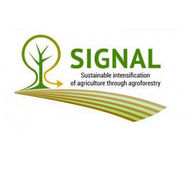Nutrient saturation of crop monocultures and agroforestry indicated by nutrient response efficiency (2021.0)
Schmidt M., Corre M., Kim B., Morley J., Göbel L., Sharma A., Setriuc S., Veldkamp E.
Nutrient Cycling in Agroecosystems, 119 (1), 69-82
doi:10.1007/s10705-020-10113-6
Abstract
Efficient use of nutrients is a key requisite for a sustainable intensification of agriculture in order to meet the increasing global crop demand while minimizing deleterious environmental impacts. Agroforestry systems exhibit tree–crop interactions, which potentially contribute to nutrient-efficient agro-ecosystems. Our goal was to determine whether the conversion from cropland monocultures to alley-cropping agroforestry increases nutrient response efficiency (NRE), the ability of plants to convert available nutrients into biomass. We found that crop yield, plant-available nutrients and NRE were comparable between agroforestry and monocultures, but the trees in agroforestry had high NRE, contributing to nutrient retention of the agroforestry systems as a whole. The unimodal relationship of the crops’ NRE with plant-available nutrients suggests that NRE values were beyond optimum in both agroforestry and monoculture indicating nutrient saturation. This indicates that fertilizer inputs can be reduced (or optimized) without sacrificing crop yield or profit. Based on the NRE curves, we assessed that a reduction of plant-available N by 50% would lead to a decrease in crop yield by 17% and a concomitant increase in N response efficiency by 67%, whereas a similar reduction of plant-available P would lead to a decrease in crop yield by 8% with an increase in P response efficiency by 83%. An optimized fertilization to achieve such lower levels of plant-available nutrients will have beneficial effects on nutrient retention and redistribution. Optimizing fertilizer input will make alley-cropping agroforestry a productive and profitable agro-ecosystem that contributes to an ecologically sustainable agriculture.

